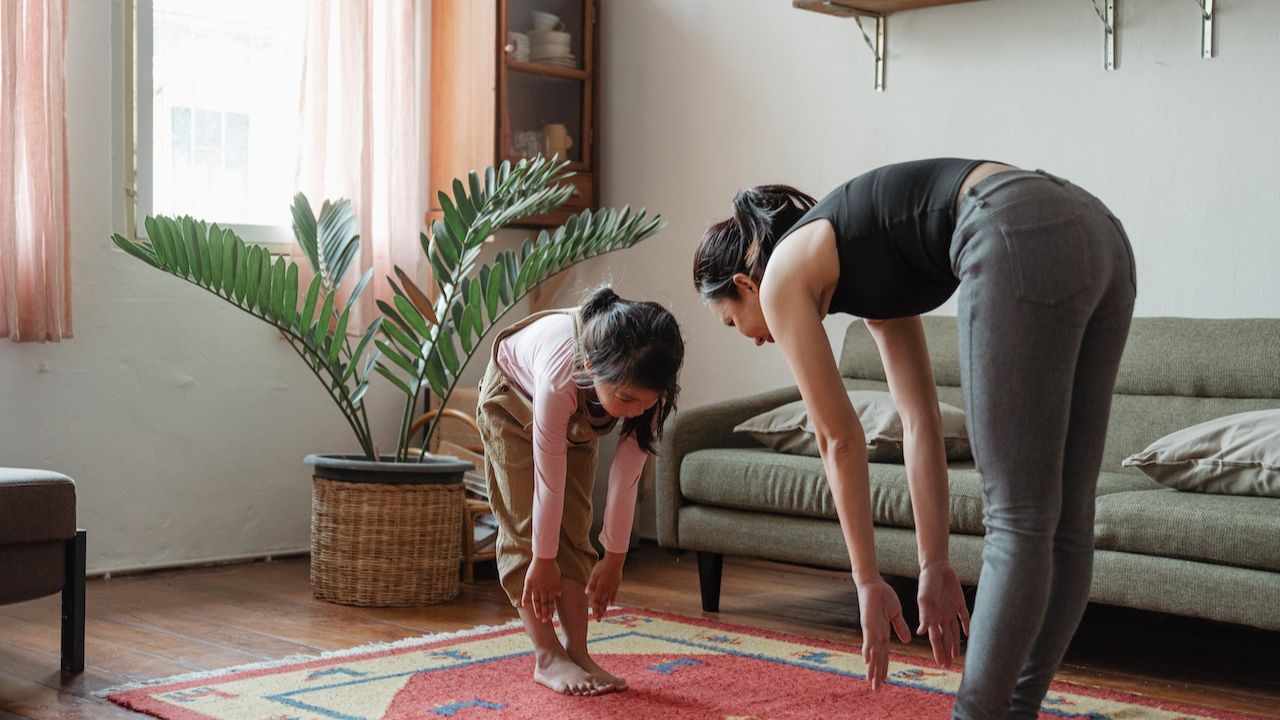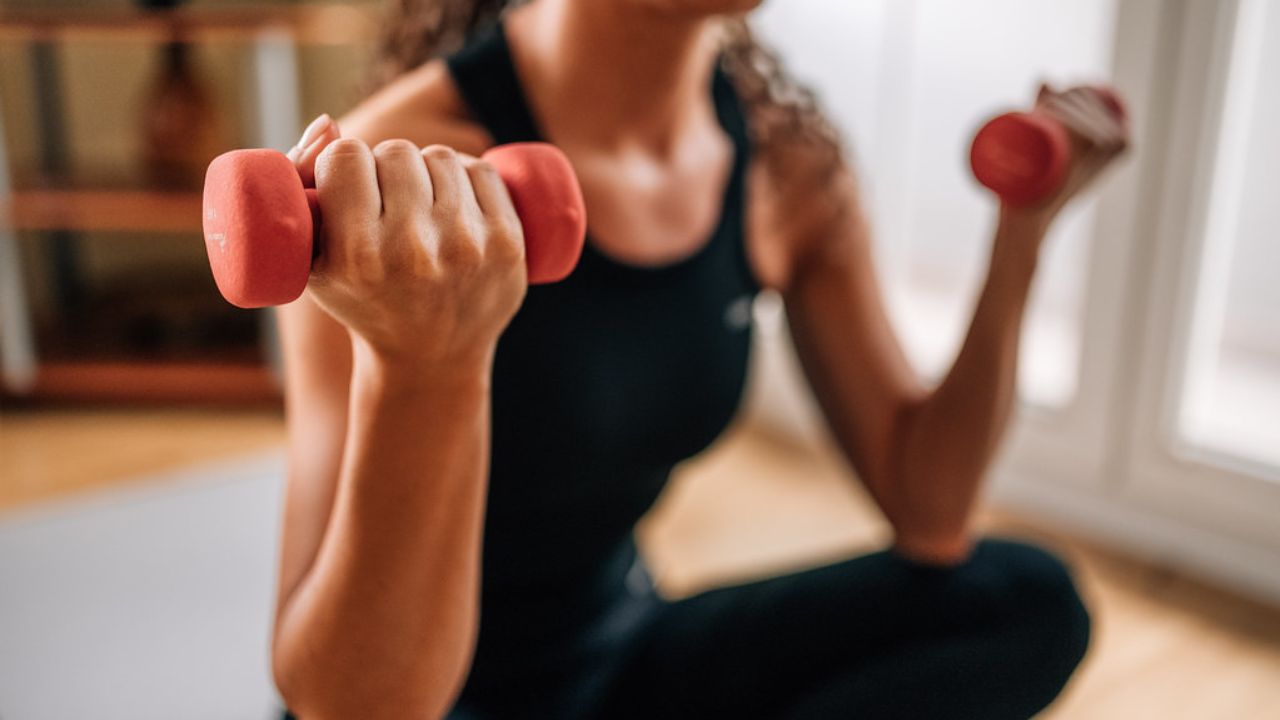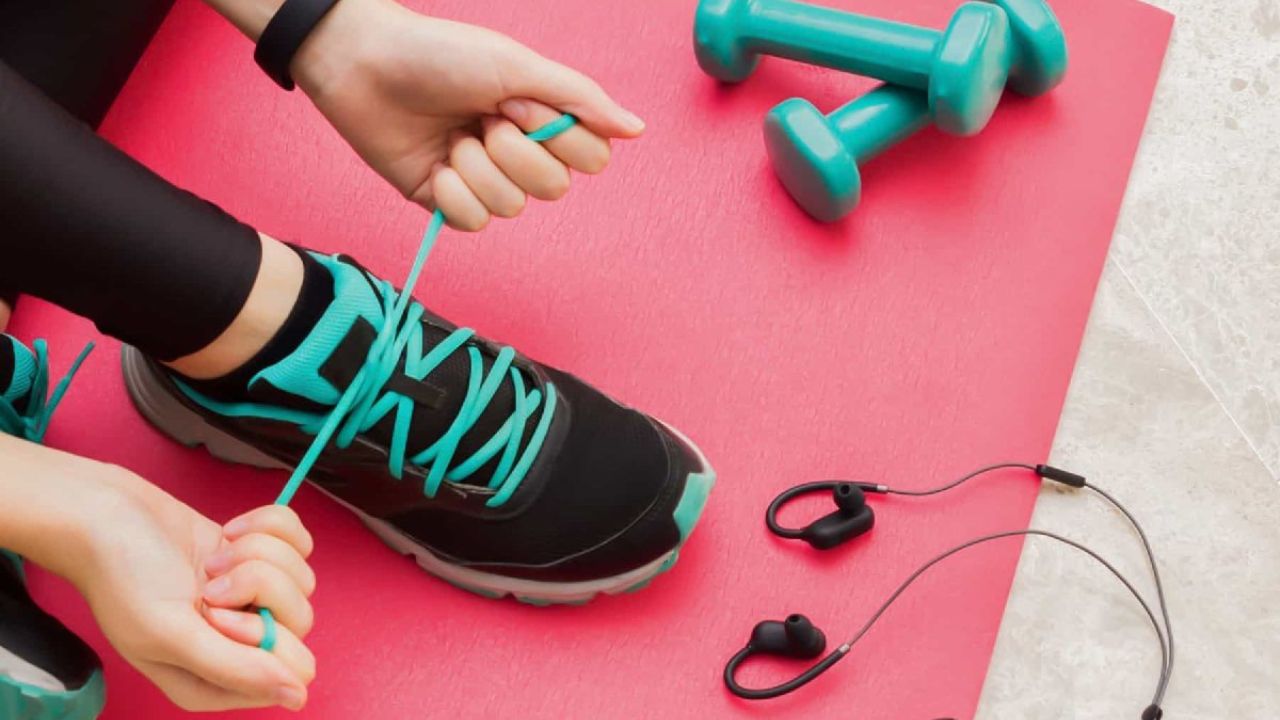
Welcome to our comprehensive guide on 11 essential at-home physical therapy techniques for chronic conditions. This evidence-based article offers a range of techniques aimed at promoting healing, improving mobility, and increasing overall well-being.
From stretching and strengthening exercises to joint mobilization and myofascial release techniques, this resource provides a variety of options for individuals seeking to manage their chronic conditions from the comfort of their own home.
Empower yourself with the knowledge and tools to take control of your health and enhance your quality of life.
Stretching Exercises
When engaging in stretching exercises, it is crucial to focus not only on range of motion but also on proper form and technique. Stretching techniques can offer numerous benefits, including improved flexibility, increased joint mobility, enhanced athletic performance, and reduced muscle soreness.
To ensure effective stretching, it is important to warm up before starting, hold each stretch for 15-30 seconds, and avoid bouncing or jerking movements. It is also advisable to stretch both sides of the body equally to maintain balance.
Incorporating stretching into a regular exercise routine can help prevent injuries, improve posture, and increase overall body awareness. Therefore, it is essential to prioritize stretching exercises and perform them correctly to reap the full benefits they offer.
Strengthening Exercises
To effectively improve muscle tone and increase overall strength, incorporating a variety of strengthening exercises, such as resistance training and bodyweight exercises, is essential. Strengthening exercises not only help to build muscle, but also play a crucial role in injury prevention and correcting muscle imbalances. When done correctly and consistently, these exercises can improve joint stability, enhance athletic performance, and reduce the risk of injuries.

Resistance training, which involves the use of weights or resistance bands, helps to build strength by challenging the muscles to work against an external force. This type of exercise can be tailored to individual needs and goals, allowing for targeted muscle development. On the other hand, bodyweight exercises utilize the body's own weight for resistance, making them accessible and convenient for anyone, anywhere.
By incorporating a combination of resistance training and bodyweight exercises into your fitness routine, you can effectively strengthen your muscles, prevent injuries, and address any muscle imbalances that may be present. It is important to consult with a qualified professional to ensure proper form and technique, as well as to personalize the exercises based on your specific needs and abilities.
Balance and Coordination Exercises
Incorporating balance and coordination exercises, such as standing on one leg while performing arm movements, can significantly improve stability and motor skills. Balance training and proprioception exercises are essential components of physical therapy, particularly for individuals with chronic conditions. These exercises not only enhance physical abilities but also promote a sense of freedom and independence.
Balance training focuses on improving the body's ability to maintain equilibrium. By challenging the body's stability, individuals can improve their balance and reduce the risk of falls. Proprioception exercises, on the other hand, enhance the body's awareness of its position in space, allowing for better control of movements.
Research has shown that incorporating balance and coordination exercises into physical therapy programs can lead to improved stability, reduced risk of falls, and enhanced motor skills. These exercises can be tailored to individual needs and can be easily performed at home.
Joint Mobilization Techniques
Joint mobilization techniques, such as passive range of motion exercises and manual therapy, can effectively improve joint flexibility and reduce pain in individuals undergoing physical therapy. These techniques are particularly beneficial for individuals with arthritis, as they help alleviate joint stiffness and promote better joint function.
Passive range of motion exercises involve a therapist gently moving the joint through its full range of motion, while manual therapy techniques involve the therapist using their hands to apply specific pressure and movements to the joint. These techniques can help increase joint lubrication, break up scar tissue, and improve blood flow to the joint, all of which contribute to improved joint health and reduced pain.

Incorporating joint mobilization techniques into a physical therapy regimen can significantly enhance the overall outcomes and quality of life for individuals with arthritis.
Myofascial Release Techniques
Significantly, myofascial release techniques have been shown to effectively relieve muscle tension and improve flexibility in individuals undergoing physical therapy. Myofascial release involves applying gentle sustained pressure to the connective tissue, or fascia, to release restrictions and restore normal function.
This technique is particularly beneficial for individuals with chronic conditions, such as fibromyalgia or myofascial pain syndrome, as it helps reduce pain and improve overall mobility.
Trigger point therapy is a specific form of myofascial release that focuses on releasing localized areas of muscle tightness and dysfunction.
Foam rolling is another popular technique used for myofascial release, where a foam roller is used to apply pressure to specific muscle groups.
Incorporating these myofascial release techniques into a physical therapy program can enhance the effectiveness of treatment and improve the overall outcomes for individuals with chronic conditions.
Heat Therapy
Heat therapy is a widely utilized modality in physical therapy, with the ability to provide relief, relaxation, and increased blood flow to the affected area, promoting healing and reducing pain. The benefits of heat therapy are well-documented and include improved muscle flexibility, decreased muscle stiffness, and enhanced tissue extensibility.

Heat therapy works by dilating blood vessels, increasing the supply of oxygen and nutrients to the tissues, and removing waste products. It can also help reduce muscle spasms and promote a sense of relaxation.
While traditional methods of heat therapy, such as hot packs and warm compresses, are commonly used, there are alternative methods available. These include heat wraps, heating pads, hot water bottles, and even heated blankets. These alternative methods offer convenience and ease of use, allowing individuals to apply heat therapy in the comfort of their own homes.
Cold Therapy
The effectiveness of cold therapy can be heightened by incorporating the use of a therapist's guidance and implementing it as part of an individual's comprehensive treatment plan.
Cold therapy, also known as cryotherapy, refers to the application of cold temperatures to a specific area of the body to reduce pain, inflammation, and swelling. It is commonly used in the treatment of acute injuries, such as sprains, strains, and post-surgical recovery.
Cold therapy offers several benefits, including pain relief, reduction of swelling, and promotion of healing. When used correctly, it can help to decrease muscle spasms, numb nerve endings, and constrict blood vessels, thereby reducing inflammation and swelling.
To ensure the best practices for using cold therapy, it is important to follow certain guidelines. First, always use a barrier, such as a cloth or towel, between the cold source and the skin to prevent frostbite. Additionally, limit the application time to 15-20 minutes per session and allow the skin to return to normal temperature before reapplying. Finally, never apply cold therapy to an open wound or broken skin.
Electrical Stimulation Techniques
An article on electrical stimulation techniques explores the potential benefits and applications of this therapy in improving muscle strength and promoting recovery.

Electrical stimulation, specifically transcutaneous electrical nerve stimulation (TENS) and neuromuscular electrical stimulation (NMES), involves the use of electrical currents to stimulate nerves and muscles.
TENS is commonly used for pain management, particularly in individuals with chronic pain conditions. It works by delivering low-level electrical impulses to the affected area, which can help to block pain signals and provide relief.
NMES, on the other hand, is often used in rehabilitation settings to help individuals regain muscle strength and function after injury or surgery. By delivering electrical currents directly to the muscles, NMES can help promote muscle contraction and improve overall muscle performance.
These electrical stimulation techniques offer a non-invasive and drug-free approach to managing pain and promoting recovery, making them valuable options for individuals seeking freedom from traditional medications and treatments.
Breathing Exercises
Incorporating breathing exercises into a daily routine can help improve lung function and reduce stress levels, especially when combined with other physical therapy techniques for chronic conditions. Breathing exercises, such as diaphragmatic breathing and pursed lip breathing, have been shown to have numerous benefits for individuals with chronic respiratory conditions.
Here are four key benefits of incorporating breathing exercises into your daily routine:
Improved lung function: Diaphragmatic breathing helps strengthen the diaphragm, the main muscle responsible for breathing. This technique allows for deeper breaths, increasing oxygen intake and improving lung capacity.

Reduced stress levels: Breathing exercises activate the parasympathetic nervous system, which promotes relaxation and reduces stress. By focusing on your breath and practicing slow, controlled breathing, you can lower your heart rate and induce a sense of calm.
Enhanced respiratory muscle strength: Pursed lip breathing involves inhaling slowly through the nose and exhaling through pursed lips. This technique helps strengthen the muscles used for breathing, improving their endurance and efficiency.
Increased tolerance for physical activity: By improving lung function and respiratory muscle strength, breathing exercises can enhance your ability to engage in physical activity. This can lead to improved overall fitness and a better quality of life.
Incorporating breathing exercises into your daily routine can be a simple and effective way to improve lung function, reduce stress levels, and enhance overall well-being for individuals with chronic conditions. It is important to consult with a healthcare professional or a physical therapist to learn the proper techniques and ensure safe and effective practice.
Posture Correction Techniques
Maintaining proper posture is crucial for overall musculoskeletal health and can significantly reduce the risk of chronic conditions.
Posture correction techniques include adopting ergonomic sitting positions to minimize strain on the spine, strengthening core muscles to support proper alignment, and performing stretching exercises to improve overall posture.
These techniques are evidence-based and can be incorporated into daily routines to promote better posture and prevent the development of musculoskeletal issues.

Ergonomic Sitting Positions
While implementing proper ergonomic sitting positions, individuals with chronic conditions can significantly reduce the risk of musculoskeletal disorders and improve their overall well-being. Here are some key points to consider when it comes to correct sitting posture and the use of ergonomic office chairs:
Align your body: Sit with your feet flat on the floor, knees at a 90-degree angle, and your back straight against the chair's backrest.
Support your lower back: Utilize the lumbar support feature of your ergonomic chair or place a cushion behind your lower back to maintain the natural curve of your spine.
Adjust your chair height: Set your chair height so that your thighs are parallel to the ground, allowing for comfortable arm and wrist positioning on the desk.
Take breaks and move: Even with ergonomic seating, it's important to take regular breaks and engage in physical activity to prevent prolonged sitting and promote blood circulation.
Strengthening Core Muscles
To improve posture and enhance overall stability, individuals can engage in regular exercises, such as planks and bridges, to strengthen their core muscles.
Core stability exercises are vital for maintaining a strong and stable core, which is essential for proper body alignment and movement. These exercises target the muscles in the abdomen, back, and pelvis, helping to improve balance, prevent injuries, and alleviate back pain.

Planks are particularly effective for strengthening the core, as they engage multiple muscle groups simultaneously, including the abdominals, obliques, and lower back.
Bridges, on the other hand, target the glutes, hamstrings, and lower back muscles, further enhancing core strength.
Incorporating these core strengthening workouts into a regular exercise routine can lead to improved posture, reduced back pain, and increased overall stability and freedom of movement.
Stretching Exercises for Alignment
Significantly, incorporating stretching exercises into a daily routine can greatly improve posture and alignment, allowing for increased flexibility and reduced muscle tension. Proper alignment is essential for maintaining a healthy body and preventing injuries. Here are some alignment techniques and posture correction exercises to consider:
- Shoulder rolls: Roll your shoulders forward and backward to release tension and improve posture.
- Cat-Cow stretch: This yoga pose helps to stretch and strengthen the spine, promoting better alignment.
- Hip flexor stretch: Tight hip flexors can contribute to poor posture. Stretching this area can help improve alignment.
- Wall angels: Stand with your back against a wall and perform slow arm movements, mimicking the motion of an angel's wings. This exercise helps to strengthen the muscles responsible for good posture.
Incorporating these alignment techniques and posture correction exercises into your daily routine can have a positive impact on your overall posture and alignment, promoting better body mechanics and reducing the risk of pain and injury.
Self-Care Strategies
Self-care strategies are essential for managing chronic conditions and promoting overall well-being.
Effective pain management techniques, such as relaxation exercises and hot/cold therapy, can help alleviate discomfort and improve quality of life.

Additionally, the mind-body connection benefits of self-care, including stress reduction and improved mental health, should not be underestimated.
Effective Pain Management
Properly managing pain through the utilization of evidence-based techniques is crucial for individuals seeking relief from chronic conditions. Chronic pain can significantly impact a person's quality of life, making it essential to explore various approaches to alleviate discomfort.
Here are four evidence-based techniques that can help effectively manage pain:
Meditation techniques: Mindfulness meditation has been shown to reduce pain intensity and improve overall well-being. By focusing on the present moment and accepting sensations without judgment, individuals can experience a reduction in pain perception.
Relaxation techniques: Deep breathing exercises, progressive muscle relaxation, and guided imagery can promote relaxation and decrease pain. These techniques help individuals to relax their muscles, reduce stress levels, and enhance the body's ability to cope with pain.
Cognitive-behavioral therapy (CBT): CBT is a psychological therapy that helps individuals identify and change negative thoughts and behaviors associated with pain. By challenging unhelpful beliefs and learning coping strategies, individuals can better manage their pain and improve their overall functioning.
Physical therapy exercises: Physical therapy can help strengthen muscles, improve flexibility, and enhance overall physical function to reduce pain. A combination of stretching, strengthening, and aerobic exercises tailored to individual needs can provide significant pain relief.

Mind-Body Connection Benefits
Understanding the mind-body connection and its benefits can provide individuals with valuable insights into how their mental and emotional well-being can influence their physical health.
Mindfulness techniques and relaxation techniques are two powerful tools that can help individuals tap into this connection and enhance their overall well-being.
Mindfulness involves being fully present in the moment and non-judgmentally aware of one's thoughts, feelings, and bodily sensations. Research has shown that practicing mindfulness can reduce stress, improve sleep, and enhance overall physical health.
Similarly, relaxation techniques such as deep breathing exercises, progressive muscle relaxation, and guided imagery can help individuals relax their bodies and minds, leading to reduced muscle tension, improved sleep, and enhanced immune function.
Frequently Asked Questions
How Long Should I Do the Stretching Exercises for Chronic Conditions?
When it comes to stretching exercises for chronic conditions, it is important to consider individual needs. Consult with a physical therapist to determine the appropriate duration for your stretching routine, as it may vary based on your condition and overall health.
Can Strengthening Exercises Worsen My Chronic Condition?
Strengthening exercises have the potential to worsen chronic conditions if not done properly. However, when performed correctly, resistance training can have numerous benefits, such as improved mobility and reduced pain. Low impact exercises are particularly beneficial for individuals with chronic conditions.
Are There Any Specific Balance and Coordination Exercises Recommended for Certain Chronic Conditions?
Balance and coordination exercises are recommended for certain chronic conditions as they can improve stability and prevent falls. Additionally, effective stretching routines can help manage pain and improve flexibility in individuals with chronic conditions.

Joint mobilization techniques can provide numerous benefits for individuals with chronic conditions. Incorporating these techniques into your daily routine can help improve joint mobility and reduce pain. It is recommended to perform joint mobilization exercises regularly, as advised by your physical therapist.
Are There Any Risks or Side Effects Associated With Myofascial Release Techniques for Chronic Conditions?
When considering myofascial release techniques for chronic conditions, it is important to be aware of potential risks and side effects. While generally considered safe and effective, individuals may experience temporary soreness or bruising.
Conclusion
In conclusion, incorporating at-home physical therapy techniques can be beneficial for individuals with chronic conditions.
Stretching and strengthening exercises help improve flexibility and muscle strength, while balance and coordination exercises enhance stability.
Joint mobilization and myofascial release techniques can alleviate pain and increase range of motion.
Electrical stimulation techniques can aid in muscle re-education and pain management.
Additionally, breathing exercises, posture correction techniques, and self-care strategies contribute to overall well-being.

These evidence-based approaches empower individuals to actively manage their conditions and improve their quality of life.
 Mobility trainingHome Fitness RecoverySports Injury PreventionPersonal Physical TherapyOrthopedic SolutionsPrivacy PolicyTerms And Conditions
Mobility trainingHome Fitness RecoverySports Injury PreventionPersonal Physical TherapyOrthopedic SolutionsPrivacy PolicyTerms And Conditions
